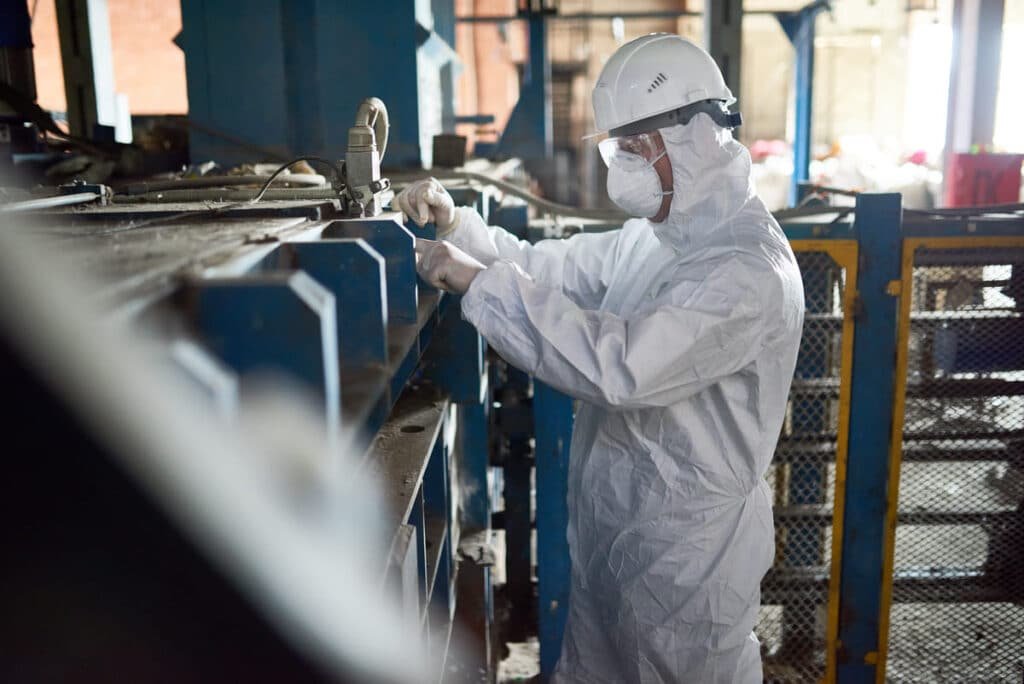Radioactive suits reviews and complaints

Protective suits, commonly known as hazmat suits, are essential in safeguarding individuals from hazardous materials and environmental threats such as radiation. With the increasing awareness and concern for safety in potentially dangerous situations, the demand for reliable and effective protective gear has risen significantly.
- Radioactive suits complaints
- What are hazmat suits and how do they function?
- What is radiation and why is it dangerous?
- What are the different types of hazmat suits available?
- How effective are protective suits against ionizing radiation?
- What materials are used in nuclear protection suits?
- What should you consider when buying a hazmat suit?
- What are the best hazmat suits for nuclear radiation?
Radioactive suits complaints
"I've been using the Dupont Tyvek 400 suit for over a year now, and I must say, it has exceeded my expectations in every way. The material is lightweight, yet incredibly durable. I work in a lab handling chemicals daily, and this suit provides peace of mind. It's comfortable enough for long shifts and offers excellent protection. I've never had a tear or issue with the zippers. I can confidently recommend it to anyone in need of reliable protection." — John M., Philadelphia, PA
"As someone who works in the cleanup industry, I rely heavily on 3M Protective Coveralls 4520. While the suit does provide good protection against particulates, I’ve found it less durable when exposed to certain liquids. After about four hours of use, I noticed some seepage through the seams. This could be a concern for those working with harsher chemicals. Overall, it’s decent, but I think 3M could improve the durability for long-term use." — Linda T., Houston, TX
"My experience with the Kimberly-Clark Kleenguard A65 has been nothing short of excellent. I use it for industrial tasks that involve dust and grime, and it holds up well. What I appreciate the most is the breathable material, which keeps me from overheating, even during physically demanding jobs. I've worn other brands in the past, but this one offers the best balance between comfort and protection." — James C., Denver, CO
"I bought the Honeywell North Gen “AIR” Series for a biohazard response team I manage, and while it does the job, the fit is awkward. Several members of my team have complained about the sizing being off—some suits feel too tight around the arms, while others are loose in the legs. The material is thick and reliable, but mobility is somewhat limited. It's okay for short-term use, but if you're in it for long shifts, it can be uncomfortable." — Karen S., San Diego, CA
"Honestly, the Ansell AlphaTec 2000 was a disappointment for me. I work with low-level radiation materials, and after only a few uses, the suit started to show significant wear and tear. The seams began to unravel, and the zipper was flimsy. I had high hopes based on its description, but I wouldn't recommend it to anyone needing serious long-term protection." — Mark H., New York, NY
"I've been using the Lakeland ChemMax 1 suit for asbestos removal, and it works great. The suit is robust, and I haven't had any issues with tears or leaks. The only downside is that it's a bit stiff, which limits my range of movement. However, the protection it offers is worth the trade-off. I've recommended this to my colleagues, and they’ve had similar positive experiences." — David G., Chicago, IL
"Terrible experience with the MIRA Safety HAZ-SUIT. I purchased it for a high-risk chemical cleanup, and after just one use, the material ripped near the knee. I was extremely disappointed given the premium price. The company offers a replacement, but it’s still unsettling to have a suit fail during a critical moment. Would not trust this product for any serious work." — Susan B., Los Angeles, CA
| John M. | ★★★★★ |
| James C. | ★★★★★ |
| Linda T. | ★★★★ |
| David G. | ★★★★ |
| Karen S. | ★★★ |
| Mark H. | ★★ |
| Susan B. | ★ |
What are hazmat suits and how do they function?
Hazmat suits are specialized garments designed to protect against dangerous substances.
These suits are a form of personal protective equipment (PPE) that create a barrier between the wearer and the hazardous environment.
They are used by first responders, healthcare workers, and in industrial settings where exposure to toxic materials is possible. Hazmat suits come in different levels, from minimal splash protection to full encapsulation, to shield against various types of hazards.
The design of a hazmat suit is intricate, with features like sealed seams, respirators, and visors to ensure no exposure to the dangerous elements.
Some suits incorporate self-contained breathing apparatuses (SCBAs) to allow the wearer to breathe safely in an oxygen-deficient or toxic atmosphere.
The functionality of a hazmat suit is contingent on its design and the materials used, which all aim to provide maximum protection.
It is crucial to understand that while these suits protect against hazardous chemicals and particles, their efficacy against ionizing radiation is limited. Proper training on the use and limitations of these suits is essential for the safety of the wearer.
What is radiation and why is it dangerous?
Radiation is energy emitted from a source in the form of waves or particles. Ionizing radiation, which includes alpha particles, beta particles, gamma rays, and X-rays, is particularly hazardous due to its ability to ionize atoms, potentially causing cell damage and increasing the risk of cancer.
This type of radiation can stem from nuclear reactions, medical procedures, and natural sources.

The danger posed by ionizing radiation depends on the dose and duration of exposure. High levels of exposure can result in acute radiation sickness, long-term health effects, or even death.
Hence, understanding and respecting the risks associated with radiation is imperative for those working in environments where exposure is possible.
What are the different types of hazmat suits available?
There are several types of hazmat suits, categorized based on the level of protection they offer:
- Level A: Provides the highest level of respiratory, skin, and eye protection available.
- Level B: Similar to Level A but without the same level of chemical protection.
- Level C: Features the same skin protection as Level A and B but with a lower level of respiratory protection.
- Level D: Offers minimal protection and is typically used for nuisance contamination only.
These levels are determined by various factors, including material, design, and the type of respirator used. The best hazmat suits for a specific hazard will be selected based on the nature of the threat and the required level of protection.
How effective are protective suits against ionizing radiation?
While protective suits can offer a barrier against radioactive particles, their effectiveness against ionizing radiation is limited.
To protect against high-energy radiation such as gamma rays, one would need heavy materials like lead or thick concrete.
Hazmat suits, however, can be effective in protecting against lower-energy radiation, such as alpha and beta particles, by preventing direct contact with contaminated materials.
Emergency evacuation and seeking shelter are often more advisable in cases of high radiation exposure rather than relying solely on protective suits. Safety protocols are essential to complement the use of hazmat suits in these scenarios.
What materials are used in nuclear protection suits?
Nuclear protection suits often incorporate materials that can shield against various forms of radiation. Common materials include:
- Lead-based materials for gamma and X-ray protection.
- Polymers and high-density fabrics to block alpha and beta particles.
- Boron-infused materials to capture neutrons.
Advancements in material science are continuously improving these suits. Companies like DuPont are pioneering the development of new fabrics that offer better protection while being lighter and more comfortable.
What should you consider when buying a hazmat suit?
When purchasing a hazmat suit, several factors should be considered to ensure you select the right suit for your needs:
- The nature and level of the hazard you are protecting against.
- The level of protection required (Level A, B, C, or D).
- Material and design features such as durability, flexibility, and breathability.
- Compatibility with other protective equipment like respirators or gloves.
It's also important to read radioactive suits reviews and complaints to gauge the reliability and effectiveness of different brands and models.
What are the best hazmat suits for nuclear radiation?
Selecting the best hazmat suit for nuclear radiation depends on the specific conditions and types of exposure. A Level A hazmat suit offers the highest level of protection and is often recommended for environments with high-risk contaminants.
For those who need a balance between protection and maneuverability, a military radiation suit with specialized features or a hazmat suit with a respirator might be more suitable. The best hazmat suit with respirator will provide not just particle filtration but also protection against chemical and radiological hazards.
It is important to consult with experts and refer to current radioactive suits reviews and complaints when making a decision, as the landscape of protective gear is continually evolving with technological advancements.
Ultimately, while hazmat suits are an essential component of protective gear for those facing chemical, biological, or radiological threats, they are not infallible.
Continuous research and development, along with adherence to safety protocols, are crucial in ensuring the highest degree of protection in hazardous environments.


Leave Your Complaint…

Related Posts